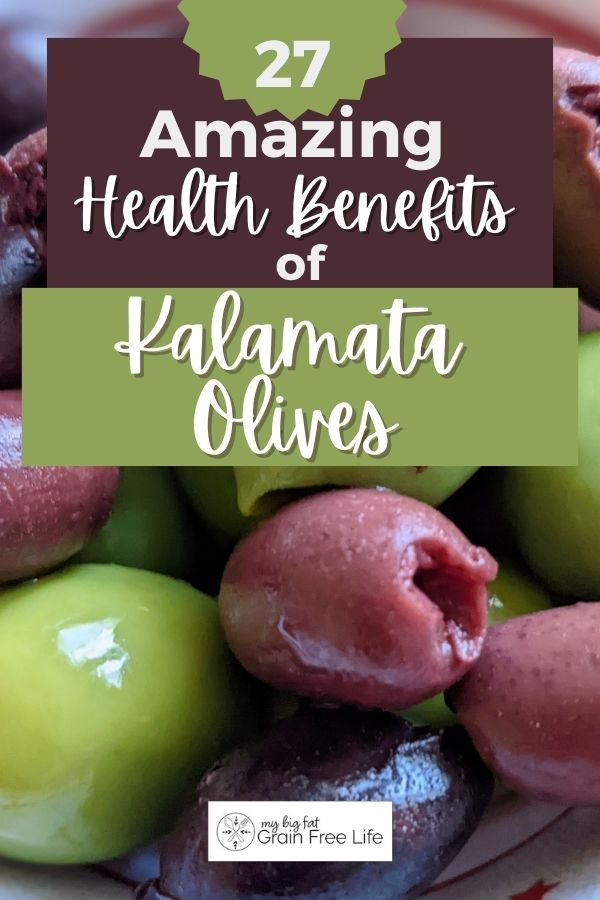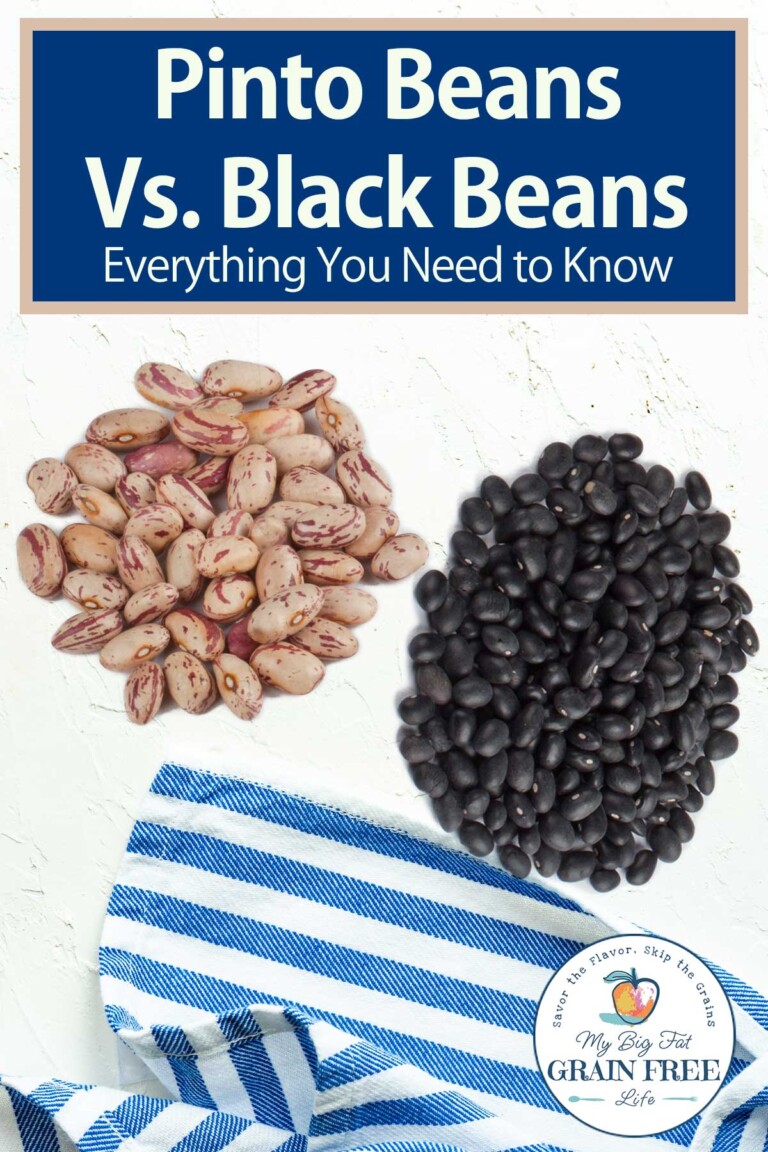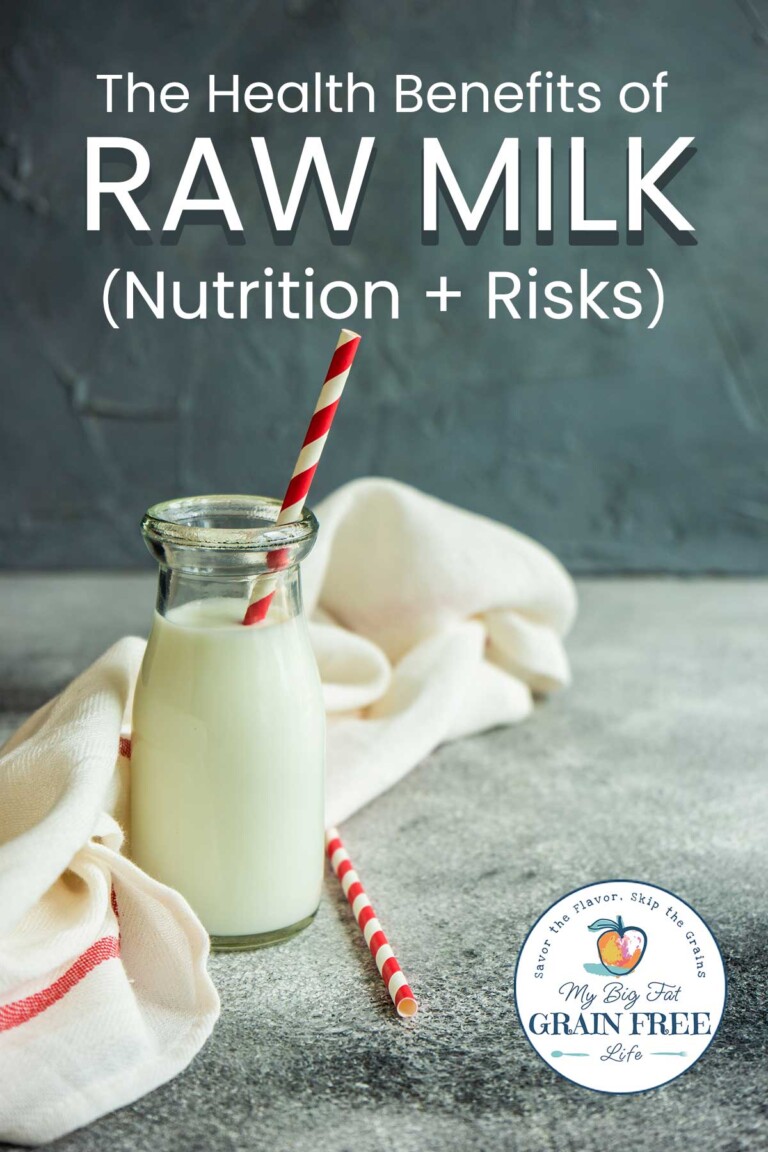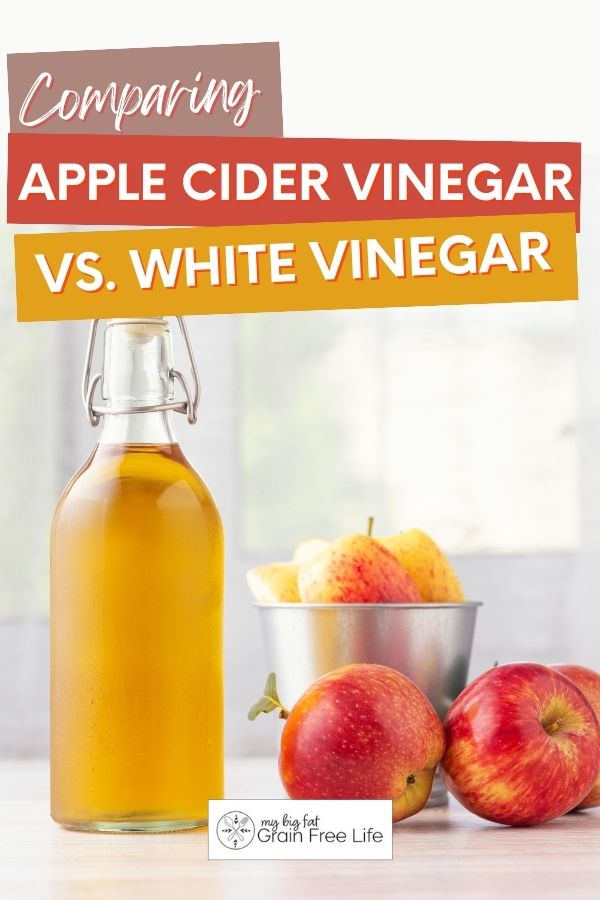27 Amazing Health Benefits of Kalamata Olives
This post may contain affiliate links. If you make purchase after clicking a link, I may receive a commission at no extra cost to you.
Last Updated on September 4, 2023
There are many varieties of olives, and some people have their favorites. Let’s explore the health benefits of Kalamata olives and take a look at all the ways eating these dark purple olives can benefit your body.

Health Benefits of Kalamata Olives
In addition to their culinary appeal, Kalamata olives are also known for their numerous health benefits. They are a source of healthy fats, antioxidants, and essential nutrients such as vitamin E and iron. They make a great AIP snack if you are on the autoimmune protocol diet.
Let’s explore all there is to know about Kalamata olives.
What Are Kalamata Olives?
Kalamata olives, named after the city of Kalamata in Greece, are a type of olive that is highly regarded for its distinct flavor and meaty texture. These olives are known for their deep purple color, almond-like shape, and meaty flesh. They have a rich, fruity taste with a slight tanginess, making them a popular choice for adding a unique flavor to a variety of dishes.
Are Kalamata Olives Good for You?
Kalamata olives are a nutritional powerhouse and full of health benefits. Including these olives in your diet can help promote heart health, reduce inflammation, support a healthy immune system, and more.
Keep reading to learn about all the health benefits of Kalamata olives.
What is the Nutritional Value of Kalamata Olives?
The nutrition facts of a single serving of Kalamata olives are highly impressive. These olives are not only delicious but also pack a punch when it comes to nutrition.
Kalamata Olive Nutrition
Here’s a breakdown of the key nutrients you can expect to find in a typical serving of Kalamata olives (approximately 4-5 olives):
1. Calories: A single serving of Kalamata olives contains around 40-45 calories.
2. Fat: Kalamata olives are rich in healthy monounsaturated fats. A single serving typically provides approximately 4-5 grams of fat.
3. Fiber: Olives, including Kalamata olives, are a good source of dietary fiber. A single serving typically contains around 1-2 grams of dietary fiber.
4. Sodium: It’s worth noting that Kalamata olives tend to have a higher sodium content compared to other olives. A single serving may contain around 150-200 milligrams of sodium.
5. Vitamins and Minerals: Kalamata olives are a source of various vitamins and minerals. They contain small amounts of vitamin E, iron, calcium, and potassium.
Origin of Kalamata Olives
These olives are specifically grown in the greek city of Kalamata, located in the southern part of the country.
The Kalamata olive tree, scientifically known as Olea europaea, thrives in the Mediterranean climate of Greece. The combination of ample sunshine, mild winters, and nutrient-rich soil contributes to the exceptional taste and quality of these olives.
Are All Olives Healthy?
Yes, all olives are indeed healthy! These small fruits are packed with a lot of nutritional components that can benefit your health in a variety of ways.

Health Benefits of Kalamata Olives
Kalamata olives offer an array of health benefits, ranging from heart health and antioxidant power to weight management and anti-aging effects. By incorporating these delicious olives into your diet, you can enjoy their extensive nutritional value and support your overall well-being.
1.) Antioxidant Powerhouse
Rich in polyphenols, Kalamata olives possess potent antioxidant properties, which combat free radicals and protect cells from damage. The following antioxidants help to contribute to the health benefits of Kalamata olives.
- Oleic acid is an antioxidant that helps reduce inflammation, supports heart health, and aids in the absorption of essential nutrients. It is commonly found in olive oil, all types of avocados, and certain nuts.
- Squalene is an antioxidant that protects the skin from damage caused by free radicals and UV radiation. It also helps moisturize and improve skin elasticity.
- Tyrosol is an antioxidant that supports cardiovascular health by reducing oxidative stress and inflammation. It can be found in olives, various fruits, and vegetables like spinach and kale.
- Oleuropein is an antioxidant with anti-inflammatory properties. It helps protect against chronic diseases, supports brain health, and enhances immune function. Olive oil and olive leaves are rich sources of oleuropein.
- Hydroxytyrosol is a powerful antioxidant that provides various health benefits, including reducing oxidative stress, supporting heart health, and protecting against neurodegenerative diseases. It is primarily found in extra virgin olive oil.
- Gallic acid is an antioxidant that helps fight against free radicals, reducing the risk of chronic diseases.
2.) Full of Healthy Fats
These dark, meaty olives are a great source of healthy fats, primarily monounsaturated fats (a good fat), which are known to support heart health.
3.) Loaded With Vitamins and Minerals
When it comes to vitamins and minerals, Kalamata olives offer a noteworthy amount of vitamin E, a powerful antioxidant that helps protect cells from damage. Additionally, they contain iron, calcium, and copper, which are essential for maintaining healthy bones and supporting proper blood circulation.
4.) May Help Fight Diabetes
Kalamata olives have a low glycemic index, making them a suitable choice for individuals with diabetes.
5.) Helps Manage Blood Sugar Levels
One key component of kalamata olives that aids in blood sugar management is their high fiber content. Fiber plays a crucial role in slowing down the absorption of glucose into the bloodstream, preventing sudden spikes in blood sugar levels.
6.) May Help Reduce Chronic Inflammation
The antioxidants found in Kalamata olives help reduce chronic inflammation, potentially lowering the risk of various diseases.
7.) Contains Cancer-fighting Properties
The antioxidants present in Kalamata olives may help protect against certain types of cancer by neutralizing free radicals.
8.) May Offer Protection of Nerve Cells
Recent findings suggest that these olives may play a role in protecting nerve cells.
9.) May Reduce Symptoms of Arthritis
Some studies indicate that the antioxidants found in Kalamata olives may help reduce inflammation associated with arthritis.
10.) May Reduce LDL Cholesterol
Kalamata olives contain monounsaturated fats that help reduce LDL cholesterol levels.
11.) May Offer Cognitive Benefits
The healthy fats in Kalamata olives support brain health and may help improve memory and cognitive function.
12.) Great Source of Fiber
The fiber content in Kalamata olives aids in maintaining a healthy digestive system, preventing constipation and promoting regular bowel movements.
13.) May Reduce Risk of Heart Disease
High potassium levels in Kalamata olives assist in balancing sodium levels, thereby helping to regulate blood pressure and aiding in promoting heart health.
14.) May Lower Blood Pressure
Studies suggest that the bioactive compounds in Kalamata olives may help lower blood pressure levels naturally.
15.) Encourages Healthy Skin
The vitamin E content in Kalamata olives helps nourish the skin, promote elasticity, and protect against UV damage.
16.) Promotes Healthy Hair
The vitamin E content in Kalamata olives helps nourish hair follicles, promoting healthy and lustrous locks.
17.) Antimicrobial Properties
Kalamata olives contain compounds that exhibit antimicrobial properties, potentially aiding in the fight against harmful bacteria.
18.) Promotes Good Eye Health
The vitamin A content in Kalamata olives supports good vision and helps prevent age-related macular degeneration.
19.) May Help Prevent Osteoporosis
Kalamata olives provide calcium, magnesium, and other minerals essential for maintaining strong bones and preventing osteoporosis.
20.) Anti-Anxiety Effects
The nutritional profile of Kalamata olives may help reduce anxiety symptoms and promote a calm state of mind.
21.) Anti-Depressant Effects
The presence of certain compounds in Kalamata olives may contribute to improved mood and mental well-being.
22.) Anti-Aging Effects
The antioxidants in Kalamata olives combat oxidative stress, which can contribute to premature aging signs such as wrinkles and fine lines.
23.) Promotes Liver Health
Due to the powerful antioxidants in Kalamata olives, they assist in detoxification, promoting optimal liver function.
24.) Anti-Allergenic Effects
Kalamata olives possess anti-allergenic properties, which may help alleviate symptoms associated with allergies.
25.) May Aid in Weight Loss
The healthy fats in Kalamata olives promote satiety, making it easier to control appetite and maintain a healthy weight.
26.) May Offer Immune-Boosting Effects
Kalamata olives contain vitamin E, which bolsters immune function and helps protect against infections.
27.) Great Source of Energy
Kalamata olives provide a good source of healthy fats, which can contribute to sustained energy levels throughout the day.

Ways to Add Kalamata Olives to Your Diet
Straight from the jar: Enjoy the natural flavor and briny goodness of olives by simply popping them straight into your mouth.
Salad topping: Add a burst of flavor to your salads by tossing in some olives along with olive oil and vinegar or a homemade vinaigrette.
Tapenade: Blend olives with garlic, capers, olive oil, and herbs to create a delicious spread.
Pizza topping: Enhance the taste of your homemade pizza by adding sliced olives.
Pasta sauce: Chop olives and mix them into your favorite pasta sauce for an extra kick of flavor.
Stuffed olives: Try stuffed olives for a delightful surprise. Fill them with cheese, garlic, almonds, or even jalapenos to create a unique and tasty treat.
Mediterranean wraps: Include olives in your Mediterranean-inspired wraps for a burst of flavor. Combine them with fresh vegetables, feta cheese, and a drizzle of olive oil for a satisfying meal.
Charcuterie board: Display a variety of olives on a charcuterie board along with cheeses, cured meats, and crackers.
Olive oil marinade: Use olive oil to marinate meats or vegetables. It adds a unique depth of flavor to your dishes.
Important Precautions
- Overconsumption can harm your kidneys, so eat in moderation.
- Raw or unprocessed kalamata olives are extremely sour and bitter and cannot be enjoyed until they go through a curing procees.
- The brine used for kalamata olives increases the sodium, so take caustion if you are watching your sodium intake.
Kalamata Olives Vs. Black Olives
Taste: Kalamata olives have a rich, fruity taste with a hint of bitterness. On the other hand, black olives typically have a milder and less pronounced flavor. They are often described as buttery and slightly salty.
Size: In terms of size, Kalamata olives are generally larger compared to black olives. Kalamatas are typically elongated and almond-shaped, ranging from medium to large in size. On the contrary, black olives are smaller and rounder in shape. Their size can vary from small to medium, depending on the specific cultivar.
Sodium Content: Black olives tend to have a slightly higher sodium content compared to Kalamata olives.
Kalamata Olives Vs. Green Olives
Taste: Green olives tend to have a milder and more buttery flavor profile than Kalamata olives.
Size: In terms of size, Kalamata olives are generally larger compared to green olives.
Sodium Content: Green olives tend to have a slightly lower sodium content compared to Kalamata olives.
Which Olives Are Best to Eat?
When it comes to health benefits, all three types of olives – kalamata, black, and green – offer unique advantages.
Kalamata olives are rich in heart-healthy monounsaturated fats and antioxidants. Black olives, on the other hand, are known for their high levels of vitamin E, iron, and copper. Green olives are a good source of vitamin A and contain lower levels of sodium.
Overall, incorporating a variety of olives into your diet can provide a range of health benefits.
How Many Olives Should You Eat a Day?
It’s important to eat any type of olives in moderation due to the high sodium content. Limit yourself to a handful of olives a day, no more than 4-5.
Do Olives and Olive Oil Have the Same Health Benefits?
Olives and olive oil share many health benefits, but they do have some differences. Both are rich in monounsaturated fats, which are known to promote heart health by reducing LDL cholesterol levels. They also contain antioxidants that help protect against inflammation and oxidative stress.
However, there are a few distinctions to consider. Olives, being a whole food, provide additional nutrients such as fiber and vitamin E. They also contain a higher concentration of polyphenols, which have been linked to various health benefits, including anti-inflammatory and anticancer properties.
On the other hand, olive oil undergoes a refining process that removes some of these beneficial compounds. Nonetheless, extra virgin olive oil retains a higher level of antioxidants and retains its natural flavor and aroma.
Do Kalamata Olives Offer Probiotic Benefits?
Kalamata olives do not offer probiotic benefits. Probiotics are live bacteria that promote a healthy gut, such as those in sauerkraut and coconut yogurt. Kalamata olives are fermented using salt water and do not contain these beneficial bacteria.
Are Kalamata Olives Acidic or Alkaline?
In its raw state, the Kalamata olive is alkaline, however the brining and curing process it undergoes makes it an acidic food.
Final Summary
Eating a healthy diet full of vegetables, fresh fruits, and different types of olive varieties is beneficial for a reduced risk of chronic diseases. Kalamata olives are a good source of fiber and terms of nutrition, can help provide a healthy snack for those with high blood pressure, and bad cholesterol.
Sources:
- https://www.ncbi.nlm.nih.gov/labs/pmc/articles/PMC6616959/
- https://fdc.nal.usda.gov/fdc-app.html#/food-details/1103679/nutrients
- https://www.ncbi.nlm.nih.gov/pubmed/11746176







